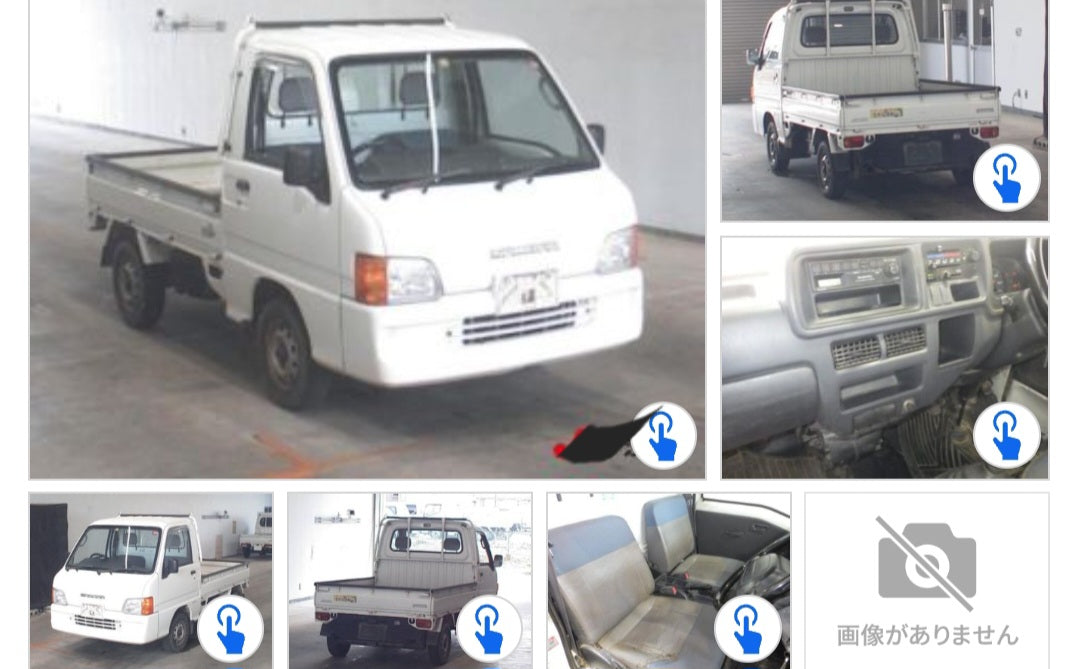JDM 95 Subaru Impreza WRX GC8C48D Version 3 Turbo Sedan 5 Speed Manual AWD 112k kilometers/ 69.5k miles.
Build date 7/95 Version 3 EJ20 260hp
Car looks and drives great, mostly stock with a couple of bolt on's like 16" Speedline wheels, Fujitsubu cat back exhaust, STI Version 6 Wing, and look like newer STI Rear seats.
Only flaws are 2 holes in a pillar cover and shift boot has a rip in it, where the spare tire is in the trunk its a little dirty. car has no rust.
Contact Rob 864-505-5621 for any questions
Announced on 22 October 1992,[5] the Impreza was released in Japan in November and offered in either front-wheel drive (FWD) or all-wheel drive (AWD) versions and as a four-door sedan or five-door hatchback/wagon (Touring).[6] The car used a shortened version of the Legacy's floor pan.[7] According to a Motor Trend article written March 1992 on page 26, the name of Subaru's new compact was, initially, to be called the Loyale, displaying an official photograph of the four-door sedan. In late 1995, a two-door coupe was introduced. In Japan it was called Impreza Retna. Initial engine choices included 1.5, 1.6, 1.8, and 2.0-liter naturally aspirated engines.
Subaru chose to continue their longstanding use of the boxer engine in the Impreza. According to Subaru, their configuration of the engine inline with the transmission minimizes body roll due to the lower center of gravity compared with offset engines in most other vehicles. The boxer design provides good vibration mitigation due to the principles of a balanced engine because the movement of each piston is largely countered by a piston in the opposing cylinder bank, eliminating the need for a counter-weighted rotating crankshaft (harmonic balancer), but with some vibration from offsets. Torque steer is also reduced with this type of powertrain layout since the front drive shafts are of equal length and weight.
There have been seven noted versions of the WRX dating back from Subaru's original World Rally Cross staging vehicles. Subaru adopted the name "WRX" to stand for "World Rally eXperimental" as all WRX versions (1992 to present) feature rally inspired technology, including all wheel drive, stiffened suspensions and turbocharged four cylinder engines. The STi versions were marketed with consecutive numbers. Another way to determine the version of a WRX was to look at the chassis code. All WRX sold between 1992 and 2000 have the beginning chassis code of GC8 2/4 door sedan or GF8 hatchback; this is followed by a letter from A to G. Coupe versions share the "GC" code with sedans, except in the US, where they have a separate chassis code of "GM".
In 1994, Subaru introduced Subaru Tecnica International (STi badged) versions of the WRX in Japan. These models were upgraded from the standard WRX in many categories, including blueprinted performance-tuned engines, transmissions, and suspensions. The STi versions of the WRX were immensely successful in rallies and popular among street racers but were only sold in the Japanese market. Compared to the WRX, the STi had mostly mechanical modifications. (STi prepped Subaru rally cars since 1988 including the Legacy RS, the WRX STi Version was just the first car with an actual STi badge, though with handcrafted tuning)
In November 1994, the WRX had a power increase to 260 PS (191.2 kW; 256.4 hp). The wheel diameters were increased to 16 inches (410 mm) and brake rotors were both changed to ventilated disks. In Japan, there was a Version of the WRX Sports Wagon with Outback trim, a bull bar and tailgate mounted spare wheel called the "Impreza Gravel Express". It was discontinued due to very limited sales. This car is considered the inspiration for the Subaru Forester.
To commemorate Colin McRae's success in the international rally scene, Subaru in the UK released 200 limited edition "Series McRae" Turbo 2000's in June 1995, prepared by Prodrive. These vehicles were finished in a very limited "Rally Blue" colour scheme, sported gold 16-inch alloy wheels, McRae decals, individual numbered badging from 1–201 (car 13 was never built since the number 13 is considered unlucky), and a factory-fitted electric tilt/slide sunroof. Recaro seats were fitted in the front, and the rear seats and side panels were retrimmed in the same Le Mans/Avus material.
The regular STi's engine output stood at 275 PS (202 kW; 271 bhp). The car weighed 1,240 kg (2,734 lb) and had gold wheels like those on the World Rally Championship Impreza. Now, the STi was built alongside the WRX on the production lines.












































